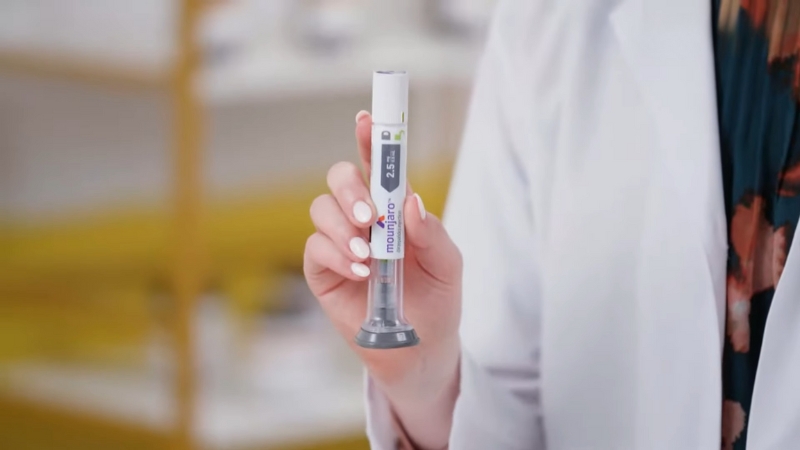
Share Post:
I’ve been searching for an all-natural, aluminum-free deodorant for over a year, trying at least six different kinds. Unfortunately, they either gave me a terrible rash or didn’t work at all. One of the main reasons I switched to aluminum-free coconut oil deodorant is due to potential health concerns.
Aluminum in deodorants has been suggested as a possible link to breast cancer and Alzheimer’s, and I’m not willing to take that risk.
Plus, it doesn’t make sense to focus on eating healthy, whole foods while still covering my skin, our body’s largest organ, with chemicals. The goal should be to live naturally in all areas of life.
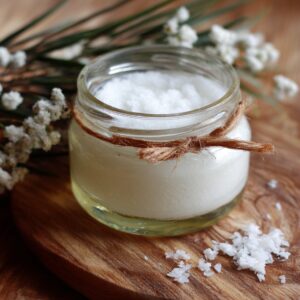
Table of Contents
ToggleNatural Coconut Oil Deodorant
Equipment
- 1 Small mixing bowl
- 1 Whisk or spoon for stirring
- 1 Measuring spoons
- 1 Empty deodorant container or small jar for storage
Ingredients
- 1/4 cup coconut oil (solid at room temperature)
- 1/4 cup arrowroot powder (or cornstarch)
- 1/4 cup baking soda
- 10–15 drops essential oil (lavender, tea tree, or lemon for fragrance and antibacterial properties)
Instructions
- Melt the coconut oil: If the coconut oil is too solid, gently melt it in a microwave-safe bowl or on the stovetop over low heat until just liquid.
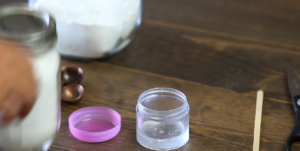
- Mix dry ingredients: In a small mixing bowl, combine the arrowroot powder and baking soda. Stir until thoroughly combined.
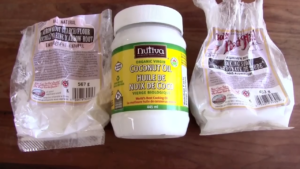
- Add coconut oil: Pour the melted coconut oil into the dry mixture, and stir until a thick, creamy paste forms.
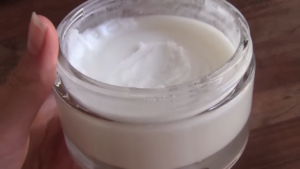
- Add essential oils: Add 10–15 drops of your chosen essential oil, and mix well
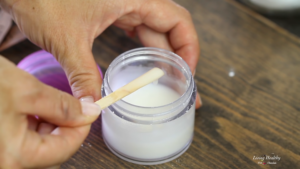
- Transfer and let it setPour or scoop the mixture into your empty deodorant container or a small jar. If using a jar, you can apply the deodorant with your fingers. Allow the deodorant to cool and solidify. You can place it in the fridge for faster results if desired.
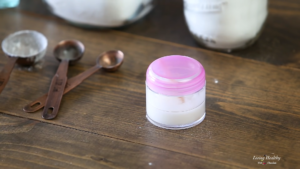
- Apply: To use, apply a small amount to your underarms. If stored in a jar, scoop out a pea-sized amount and rub it in until absorbed.
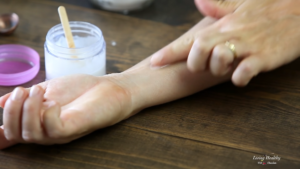
Video
Notes
- If the deodorant is too soft, add a bit more arrowroot powder or baking soda. If too hard, increase the coconut oil slightly.
- Some people have sensitive skin and find baking soda irritating. You can reduce the amount of baking soda and increase the arrowroot powder, or substitute it with bentonite clay for a gentler alternative.
Choosing Better Ingredients for Health and Comfort
Natural ingredients support clean living without triggering rashes or odor. Each part of the recipe contributes a specific benefit that improves comfort and daily use. The right balance also helps sensitive skin adjust more easily over time.
How Coconut Oil Supports Skin Without Irritation
Coconut oil melts into skin and delivers medium-chain fatty acids that moisturize deeply. It protects against chafing and reduces the chance of redness after shaving. Its light antibacterial profile also helps keep odor-causing bacteria under control.
How Arrowroot Powder Keeps Moisture Under Control
Arrowroot powder absorbs sweat without clogging pores. It helps maintain a dry surface on the skin, especially during high activity or hot weather. Its fine texture blends smoothly with oils and creates a soft, velvety finish.
For those struggling with excess shine or dampness, oil control products, such as clay-based powders or herbal mattifiers, can also be used alongside this deodorant to boost dryness and keep skin balanced throughout the day.
How Baking Soda Stops Odor Before It Starts
Baking soda neutralizes acidic compounds in sweat. That helps prevent the buildup of odor over time. It raises skin pH in a way that makes it harder for bacteria to thrive. For delicate skin, bentonite clay can replace some or all of the baking soda.
How Essential Oils Boost Skin Defense and Freshness
Essential oils give the recipe its fragrance and also enhance antibacterial strength. Tea tree targets bacteria. Lavender soothes sensitive skin. Lemon refreshes and tones. All three work well alone or in combination for a personal scent blend.
Wholesale Botanics carries each of these oils in pure form. They test for purity and provide unblended essential oils that match homemade deodorant needs. Their variety includes tea tree, lemon, lavender, and other options ideal for sensitive skincare formulas.
In Summary
This recipe is so simple and effective that you’ll never want to go back to store-bought deodorants. I’m always on the go, so I mix up a batch and pour it into deodorant tubes. It’s quick, easy, and works like a charm!
Related Posts:
- Essential Oil Roll-On Perfumes: A Natural, Elegant,…
- Citrus Mint Infused Green Tea - Homemade Recipe
- DIY Natural All-Purpose Cleaner - Budget-Friendly & Simple
- Endorphins and Exercise: The Natural Way to Relieve…
- DIY Texturizing Spray for Beachy Waves – Natural & Non-Toxic
- Healthy Homemade Graham Crackers - Try This…








